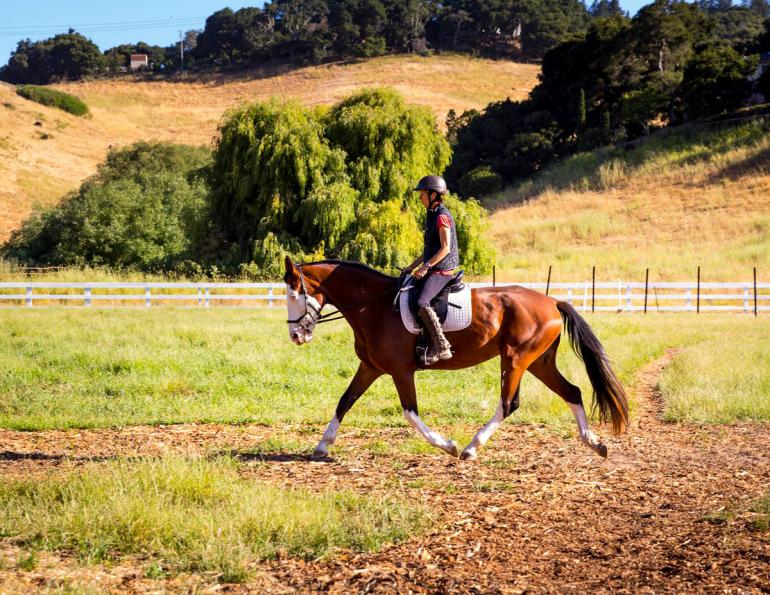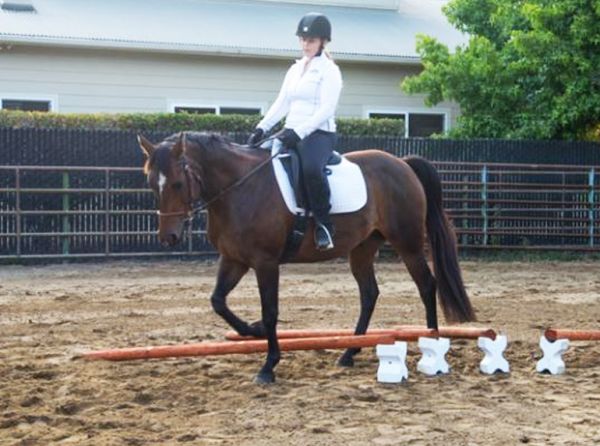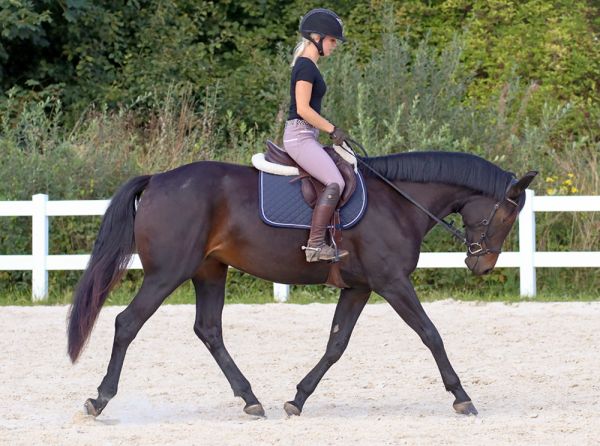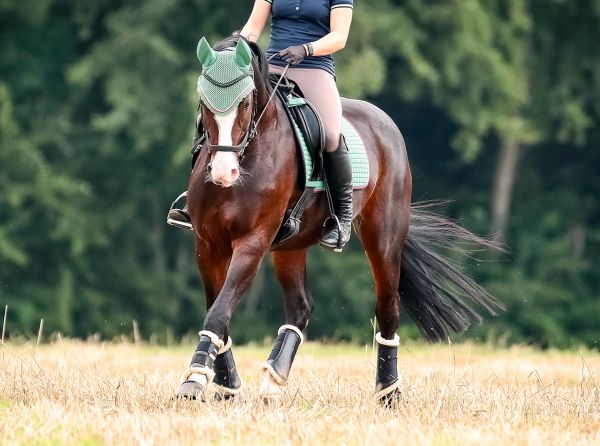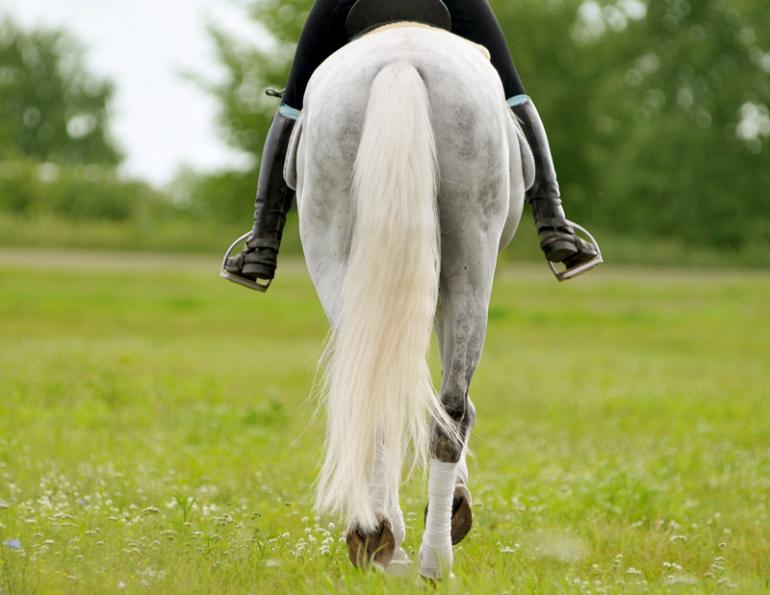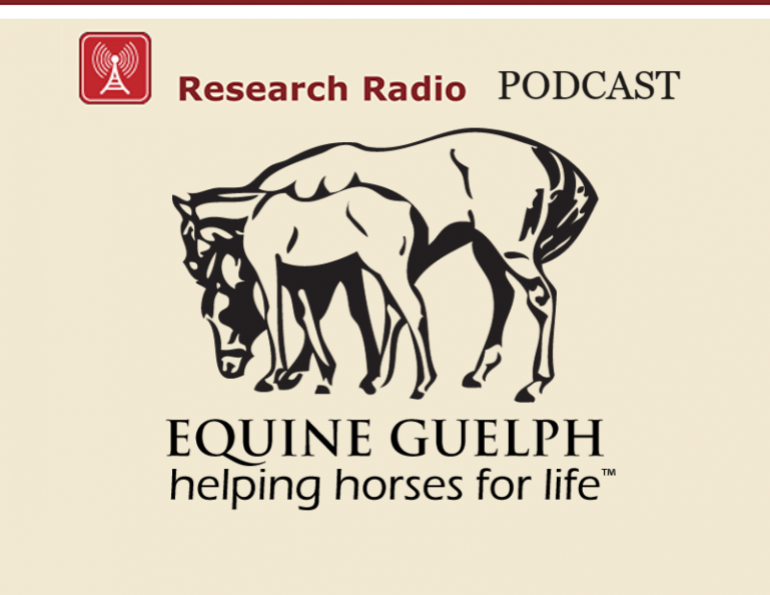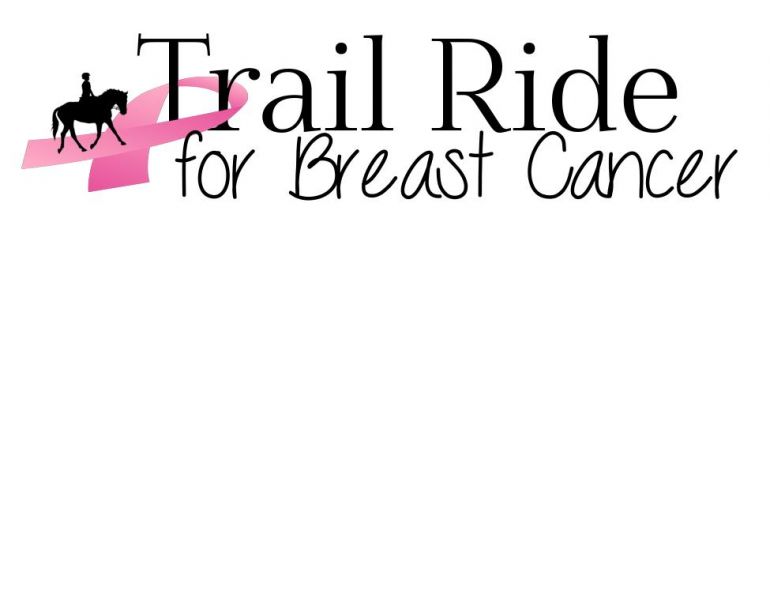By Jec A. Ballou
Perhaps one of the most delightful aspects of riding is the way it steadies and focuses our human minds in those moments we sit astride. For myself, anyway, I savour the monastic contemplation of the first minutes of a ride as I consider: What does this horse need? Every session originates from how I can improve the horse’s physical well-being, and this requires a good deal of paying attention.
It also requires a decision: Should I ride fast or slow? Many of us ride at a speed WE prefer, or one that the horse dictates from habit. On any given day, a horse’s individual mechanics and musculature can be improved — or not — by schooling at just the right speed. Some need to strengthen their longissimus and organize their bodies by riding briskly, while others need to confirm better joint flexion and ease tension from a tight topline by trotting slowly for periods of time.
A mare I have been working with lately has a nicely forward-going attitude; she is not lazy or dull. When moving in her default trot speed, however, she pushes her weight forward to her chest and forelegs, becomes rigid through the neck, and drags her hind feet.
In her case, I school in a slow jog rather than her preferred trot speed, because she then balances her body weight more equally over all four legs, softens her neck, and motion begins to swing through her spine. In other words, her muscle development and correctness of movement will progress much faster as a result of riding slower. The old classical master, Alois Podhajsky, touted the value of schooling this “pony trot” for horses like my mare.
Not ALL horses benefit from riding so slowly, though. For horses that have become restricted in the lower back and hips from draw reins or aggressive bits, or horses entirely lacking conditioning, it is more useful to ride in a faster tempo. At a faster trot, the back muscles have to become more tensioned to balance the exaggerated motion of diagonal pairs of legs swinging.
Every horse is unique, and so is the speed that most suits their workouts. So how to you tell which is best for your horse, fast or slow? Ask yourself at which speed the horse’s back feels more springy and soft. Then, have someone knowledgeable observe you from the ground and note these three measurements when riding in different speeds:
- When does the horse track up the best (hind hooves stepping fully in to the foot prints of the front hooves) – when he goes faster or slower?
- When does his tail swing from side to side with optimal looseness?
- When do his top neck muscles relax sufficiently to “bounce” lightly in rhythm with his trot strides rather than appearing hard, smooth, tight?
If you are still unsure which speed suits your horse most, ride the following two figures at both speeds to get clearer. Ride a large figure of 8 in both slow and fast trots. And then ride a large square in both slow and fast trots. At what speed was your horse less wobbly on his line of travel and steadier in his topline posture?
To read Jec Ballou's articles on this site, click here.
Photo courtesy of Jec Ballou.



